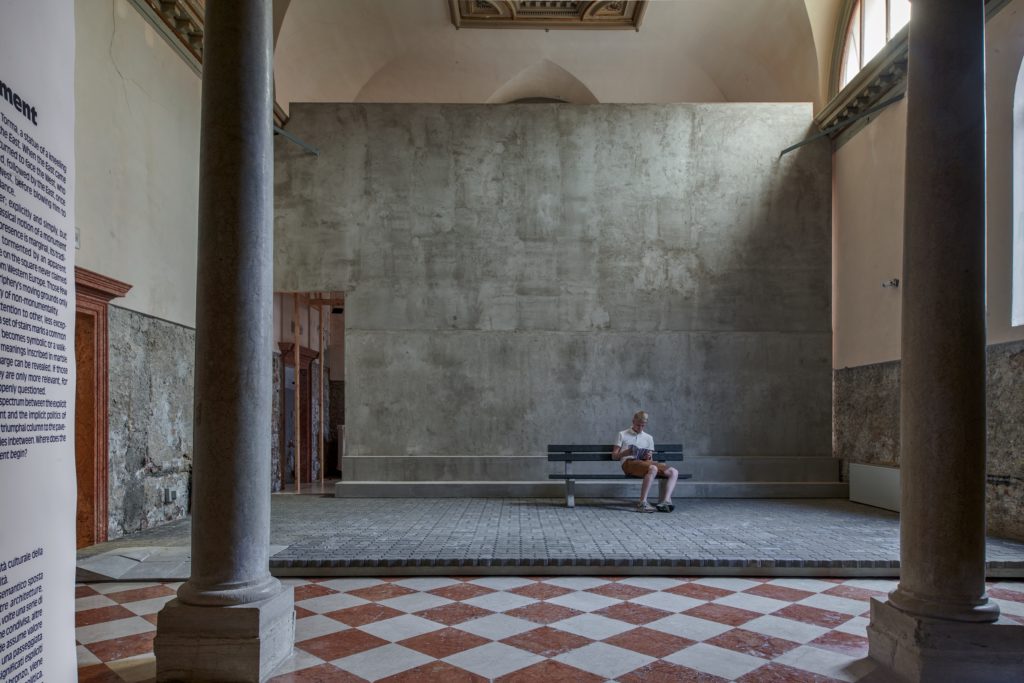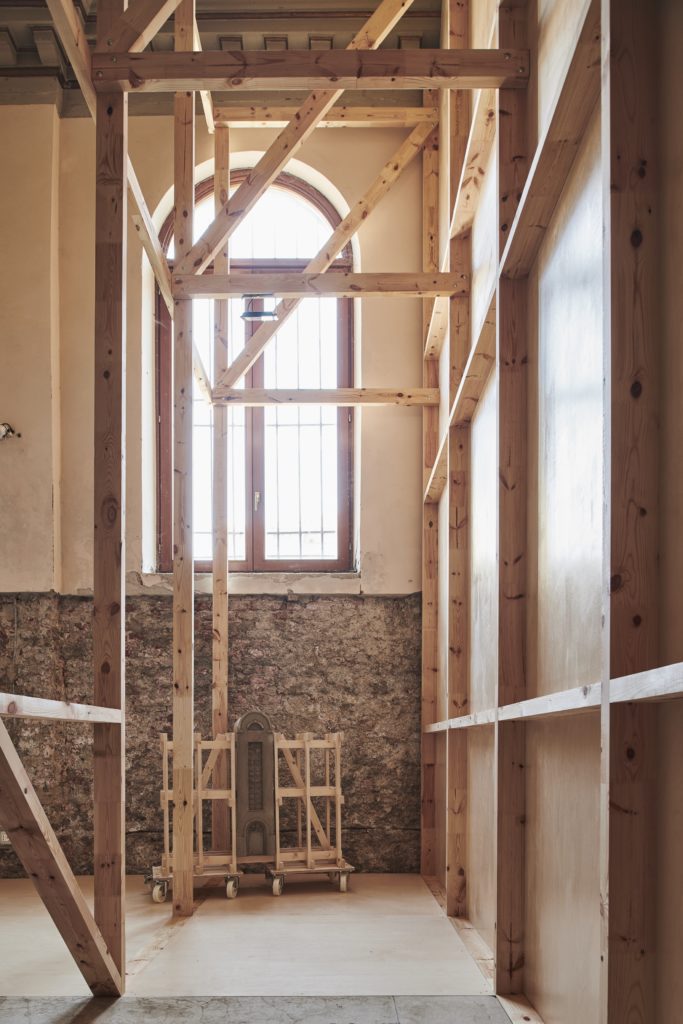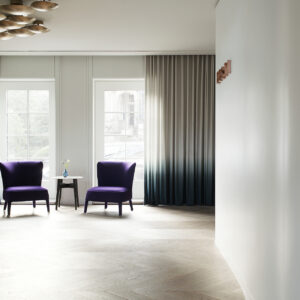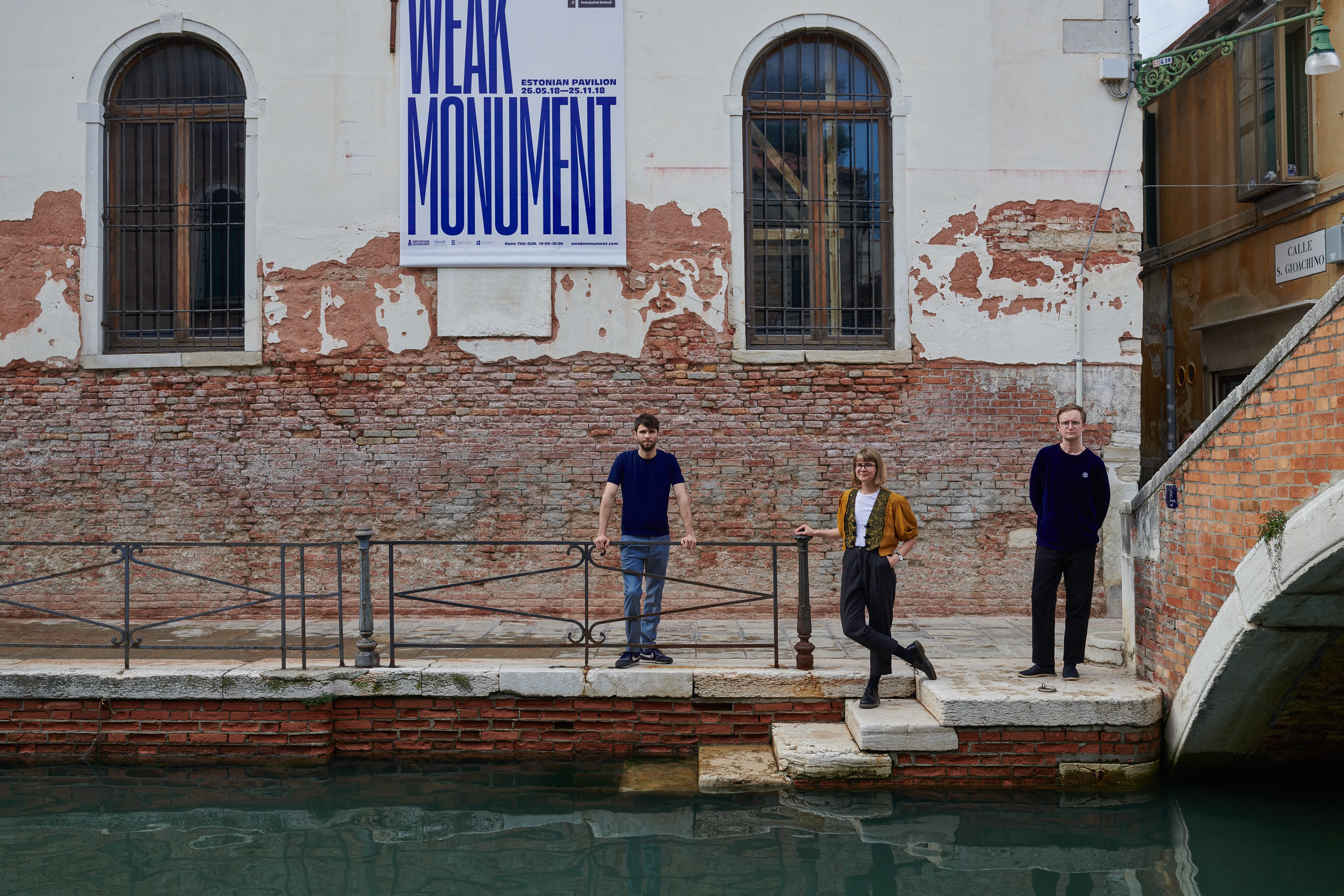




The project made the temporary and intangible nature of the monument tangible to a broad audience. So often invested with import and meaning, the monument as we commonly think of it inevitably falls prey to its circumstances and the conditions of its visibility, which are constantly shifting. Rather than seeing this as problematic, the curators accepted that the monument’s meanings are contingent upon those contexts –– physical, historical, cultural, discursive –– and are therefore, weak. There is both beauty to this and hope for the possibility of the monument. Over the course of time, monuments are abused, ignored, debased, destroyed; they are also improvised, repurposed, and reimagined. The curators reached deep into the culture of the Estonian monument to find that it was to be found not only in those sites that declare themselves as monuments, but in the movements and scenes of everyday life manifest in Estonia’s material culture.
The installation in the church of Santa Maria Ausiliatrice in Venice was a temporary construction of this idea in action. The iconography of the deconsecrated church was obscured by another construction, one that appeared to be a street scene, banal yet filmic, which filled the space of the church. This is the essence of weak form as suggested by Gianni Vattimo: the meanings of things are dependent upon their relations to other things, and these relations are always in flux. The project “Weak Monument” therefore proposed not only a history, but a programme for both the future and the present, wherein values can always assume form whose nature is by definition contingent. The authors suggest that people within societies can express their values within the conditions of their own visibility –– however fleetingly –– through means that address and challenge the meanings inscribed within those conditions.
Mark Pimlott / TU Delft | Delft University of Technology, Department of Architecture, assistant professor
















































































































































































































